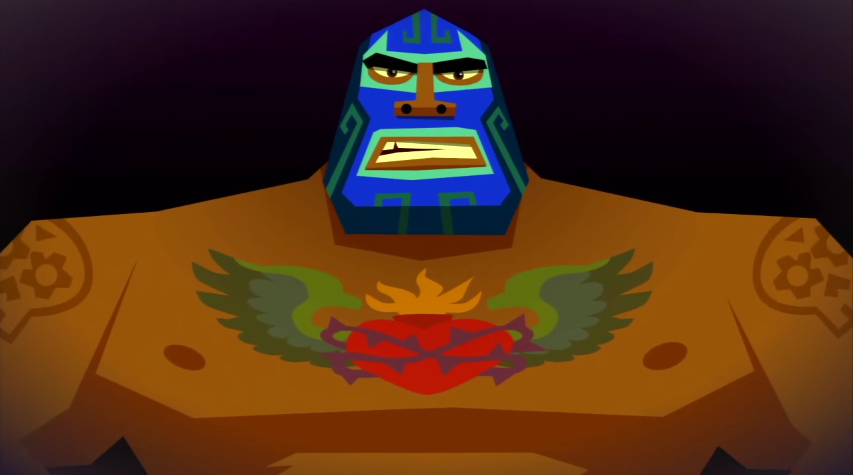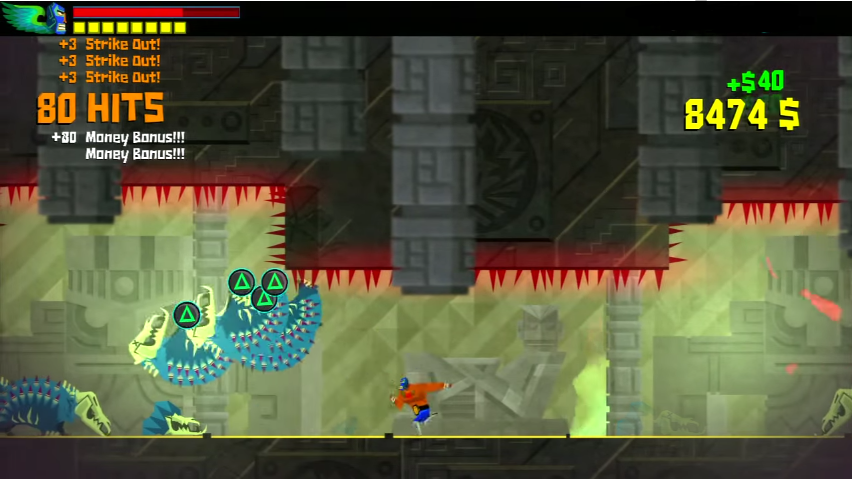Overview - Guacamelee! Review
STRENGTHS
+ Improves on the Metriodvania formula with excellent platforming
+ Exudes style from its Mexican folklore and culture inspired roots
WEAKNESSES
- Stereotypes of the culture and cultural appropriation may offend
- Thin story and limited dialogue compared to its contemporaries
Guacamelee INFORMATION
Release Date: April 9th, 2013
Developer/Publisher: Drinkbox
Guacamelee exudes style and confidence as it takes the Mexican inspired cultural setting and the fictional life of a luchador, combining them to provide a colorful story of love, honor and revenge. The beauty of Guacamelee oozes from the art design and the wonderful smoothness of combat in a terrific Metroidvania-like experience. Perhaps a bit stereotypical, or even slightly in the realm of cultural appropriation, the intention is celebratory and it seems to accomplish that with the obvious love and care on display in all aspects of Guacamelee.
Story - Guacamelee! Review
Guacamelee's story is a simple tale of a damsel in distress and the attempt to rescue her. The protagonist, Juan, however, is not a fighter, just a struggling farmer, and is killed trying to prevent the immediate abduction. The first instance of Mexican folklore influencing the story is found when Juan wakes up in the land of the dead and meets a luchador who provides him with a Juan's very own luchador's mask. This mask provides Juan with new fighting abilities and the means to reunite with his love. From here on, the folklore is explored as Juan progresses in his quest.
There is no voice acting in Guacamelee, the story is conveyed through speech bubbles. While this can be a turnoff in this day and age, the conversations are so short and succinct that it's never a chore. Instead the story is told through all of the Mexican folklore machinations that litter Guacamelee's world. Talking roosters and goats lend humor to an otherwise, suprisingly dark story about love and death, that never feels that way. Death is celebrated by the vibrant life in Mexican Folklore and Guacamelee reflects that perfectly.
Technical - Guacamelee! Review
Guacamelee runs well on every platform and the Vita is no different. In many ways, the colors and crispness of the 2D animation look best on Vita's small, vibrant screen. The detail of the character models and backgrounds are not necessarily impressive but the art style is. Guacamelee's art design is highly original in the game space and makes it stand out. The straight-lined, flat but blocky models filled with a contrast of colors, but themed throughout is extremely distinctive. It has a 90s Disney animation quality to it, that despite the distintiveness also adds familiarty. Individual Cacti litter the game against the full pallette of pastels with oranges and browns making up the dryness of the setting. It's unmistakably Mexico.
Sound effects are equally impressive, echoing the sounds of the culture Guacamelee so tries to emulate.
Music - Guacamelee! Review
Similar to the graphics, the music exudes the triumphant horns of Mexican Folklore. Every victory is treated with fanfare, as every loss is presented with a somber harem of trumpets. It's as stereotypically charming as the rest of the game, and is a perfect accent to the onscreen action and art style.
While the music is a perfect companion to the other aspects of the game, no individual arrangements stand out. In addition, all the music, accordingly, sounds similar. Of course this is due to the limited settings and story telling of the game, but because of the limited setting, the music is also restricted.
Gameplay - Guacamelee! Review
Guacamelee's gameplay as a whole does a a great job of meshing high-level platforming with a brawling attack structure that's both deep and flows well.
At first Guacamelee seems like nothing more than a side-scroller with some nice verticality. You start off the game with the ability to attack enemies using standard button combinations and can also perform a grapple attack. The caveat is that as you progress, Juan, your character, becomes more powerful as he gains new abilities that deal more damage. These new abilities are what the 8 and 16-bit era deemed "special" powers. Each time one of them is used it drains a stamina meter (that replinishes over time). In addition to these specials, defeating enemies yields coins that can be used to unlock new attacks or increase the player's health and stamina bars. The special moves are acquired by special statues (usually after defeating a boss), and the ability is tested immediately. Following the acquisition of a new ability the next section of the game essentially serves as a tutorial on how best to utilize it. But what Guacamelee does so well is make these abilities required to advance and the logic behind them useful and fun to use. Many of these moves, such as an uppercut, headbutt, and dashing punch, aren't simply attacks, and the other abilities acquired are for platforming purposes such as double jumping and wall jumping and running, and the ability to turn into a chicken are designed for platforming.
Guacamelee's combat is more than just a Metroidvania game, it also excels at platforming, and despite the attacking nature of the power-ups, they are extremely important to the overall navigation as well. Another ability Juan acquires is to transport between the living and dead which changes the layout of the platforming elements. Puzzles are all platforming based, leading to some gnarly finger contortions and hand-eye coordination. Using the special attacks in conjunction with double-jumping and switching between worlds, and thus a pillar or platform placement all within midair make for some harrowing platforming and something that isn't seen in other Metroidvania games.
The special attacks are color coordinated and are the only attacks that be be used for an enemy of the same color, or in some instances you'll have to switch between the living and dead worlds to attack specific enemies, or finally a combination of both.
Other features include the ability to play with another character, who only plays slightly differently. It's a female character that can be switched on an off, but doesn't change much in the way of story or gameplay.
In addition to the special move power-ups, many of the upgrades come from a purchasing system. "Stores" are found periodically throughout the game where upgrades to health, stamina and even new attack combinations can be purchased.
Guacamelee! Review Roundup
Guacamelee is a culmination of all Metroidvania games before it and expands on them incredibly with its difficult but rewarding platforming. Somehow Guacamelee makes platforming feel as if you've accomplished something. Often times you get past a platforming puzzle where you're not sure if the game was designed to let you. You'll ask if you should have been able to advanced past those sections without another upgrade. It's not open world, it's open platforming.
I'd be remiss not to acknowledge the cultural appropriation angle of Guacamelee. Many culture-based games, such as a game featuring the stereotypes and tropes of Japanese culture, made by the Japanese, are a satire on their own culture, but in the case of Guacamelee, which is made of mostly Canadians, the cultural setting of the game and it's representation can become complicated. This of course is not the same as racism and is definitely not the intention because of how much thought went into the game but it's an issue nonetheless, and one, as a gamer, you should be aware of.







